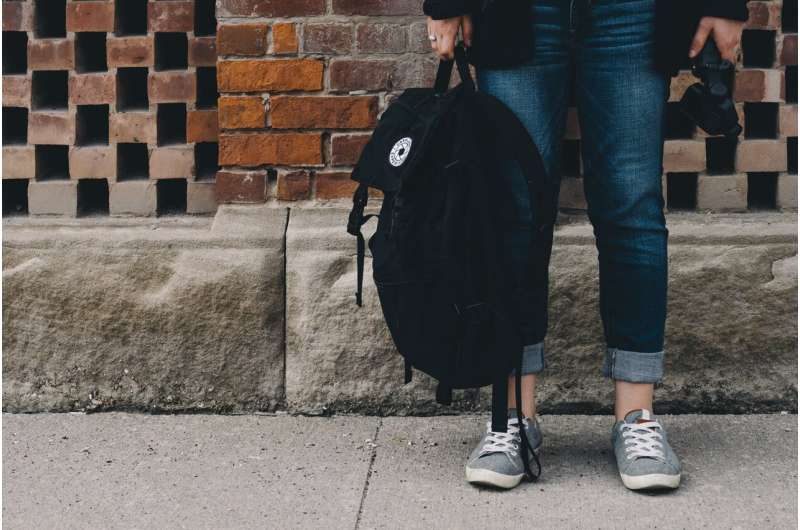This article has been reviewed according to Science X's editorial process and policies. Editors have highlighted the following attributes while ensuring the content's credibility:
fact-checked
peer-reviewed publication
trusted source
proofread
A troubling reaction to school violence compounds the crisis

High school students who experience violence or bullying at school are more likely to bring weapons like a gun, knife, or club to school than those who have not experienced violence, according to a new study in the American Journal of Preventive Medicine.
Because weapons increase the potential for injury and death when there is interpersonal conflict, developing a better understanding of the relationship between exposure to violence and weapon carrying is essential for developing effective public health interventions.
"With 93 school shootings in the US just the 2020-21 period alone, and an average school shooter age of 19.7 years (in school shootings since 1970), the issue of school violence couldn't be more pressing. The occurrence of violence in school settings is an urgent and complex public health problem," explained lead investigator Richard Lowry, MD, MS, Office of the Director, National Center for Viral Hepatitis, STD, and TB Prevention, Centers for Disease Control and Prevention (CDC), Atlanta, GA, U.S..
"Our research examined the link between exposure to violence and weapon carrying. We found students who experienced violence at school were much more likely to carry weapons than those who had not experienced violence," he noted.
Data on 28,442 participants from the CDC's National Youth Risk Behavior Surveys from 2017 and 2019 were analyzed to calculate sex-stratified, adjusted prevalence ratios, which were also adjusted for race/ethnicity, grade, sexual identity, current substance use, suicidal thoughts, and history of concussion. The research is novel because it used recent data available, has results for males and females, and is adjusted for important demographic factors.
Overall, 3.3% of US high school students carried a weapon at school. Among all students, 6.6% were threatened or injured with a weapon at school, 19.3% were bullied at school, 8.3% were in a physical fight at school, and 7.7% were absent from school due to safety concerns.
Nearly half of males (48.8%) who experienced all of these forms of violence, and nearly a third of females (31.4%) who did, carried weapons at school. Males and females were respectively 3.5 and 3.9 times more likely to carry a weapon if they had been threatened or injured with a weapon at school, and 3.4 and 3.7 times more likely following a physical fight at school. Males who felt unsafe were twice as likely to miss school, while females were three times more likely than those who didn't report feeling unsafe.
"Too often students are victims of violence when they are at school," said co-investigator Jeffrey Ratto, DrPH, Division of Violence Prevention, National Center for Injury Prevention and Control, CDC.
"We know violence can be prevented. Schools, families, and communities can help prevent school violence and support students who experience school violence. Students who experience school violence likely need additional support, such as counseling around issues of conflict resolution, substance use, and mental health and social support."
More information: Richard Lowry et al, Associations Between Exposure to School Violence and Weapon Carrying at School, American Journal of Preventive Medicine (2023). DOI: 10.1016/j.amepre.2023.03.007
Journal information: American Journal of Preventive Medicine
Provided by Elsevier




















